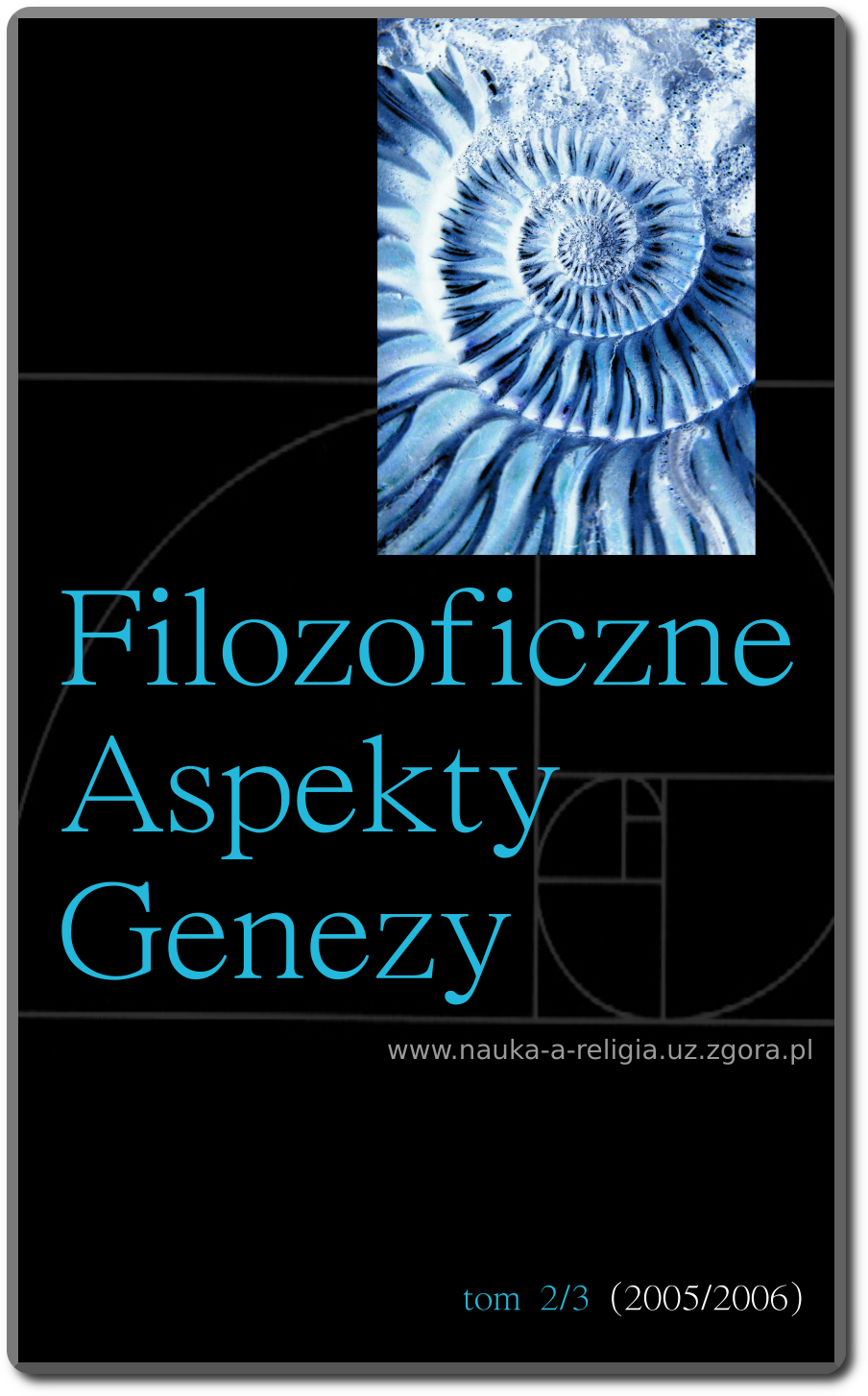Opublikowane 21.05.2021
Słowa kluczowe
- argument z projektu,
- Michael J. Behe,
- nieredukowalna złożoność,
- Darwinizm,
- inteligentnego projektu
- wić bakteryjna,
- Karol Darwin,
- William Paley ...More

Utwór dostępny jest na licencji Creative Commons Uznanie autorstwa 4.0 Międzynarodowe.
Jak cytować
Abstrakt
Miller wskazuje wady Michaela Behe'ego koncepcji nieredukowalnej złożoności układów biochemicznych. Uważa, że układy uznawane przez Behe'ego za nieredukowalnie złożone da się w rzeczywistości zredukować do prostszych struktur. Miller proponuje również możliwą drogę ewolucyjnego powstania tych układów, mianowicie mechanizm koopcji, który polega na przejmowaniu składników pełniących jakieś selekcjonowane przez dobór naturalny funkcje i tworzeniu z nich nowych, bardziej złożonych układów, które także pełnią funkcje selekcjonowane przez dobór naturalny. Ponadto, zdaniem Millera argument Behe'ego właściwie niczym nie różni się od dawno już zdyskredytowanego - jak twierdzi Miller - argumentu z projektu autorstwa dziewiętnastowiecznego biologa i teologa, Williama Paleya.
Downloads
Bibliografia
- Behe Michael J., Darwin’s Black Box: The Biochemical CHAllenge to Evolution, The Free Press, New York 1996. "Miller Kenneth R.
- Kenneth_Miller@Brown.edu
- Brown University"
- Behe Michael J., „Experimental support for regarding functional classes of proteins to be highly isolated from each other”, w: J. BUELL and V. HEARN (eds.), Darwinism: Science or Philosophy?, The Foundation for Thought and Ethics, Houston, Texas 1994.
- Gould S.J., „Hooking Leviathan by its past”, Natural History, May 1994, s. 8-15.
- Behe Michael J., „Intelligent design theory as a tool for analyzing biochemical systems”, w: W.A. DEMBSKI (ed.) Mere Creation, InterVarsity Press, Downers Grove, Illinois 1998.
- Behe Michael J., „Evidence for intelligent design from biochemistry”, z mowy wygłoszonej 10 sierpnia 1996 na konferencji zorganizowanej przez Discovery Institute na temat „Bóg a kultura”.
- Musser S.M. and Chan S.M. , „Evolution of the cytochrome c oxidase proton pump”, Journal of Molecular Evolution 1998, vol. 46, s. 508-520.
- Melendez-Hevia E., Waddell T.G. and Cascante M., „The puzzle of the Krebs citric acid cycle: Assembling the pieces of chemically feasible reactions, and opportunism in the design of metabolic pathways during evolution”, Journal of Molecular Evolution 1996, vol. 43, s. 293-303.
- Huynen M.A., Dandekar T. and Bork P., „Variation and evolution of the citric acid cycle: A genomic perspective”, Trends in Microbiology 1999, vol. 7, s. 281-291.
- Rizzotti M., Early Evolution: From the Appearance of the First Cell to the First Modern Organisms, Birkhauser, Basel 2000.
- Wooley D.M. , „Studies on the eel sperm flagellum”, Journal of Cell Science 1997, vol. 110, s. 85-9 4.
- Jarrel K.F., Bayley D.P. and Kostyukowa A.S., „The archael flagellum: A unique motility structure”, Journal of Bacteriology 1996, vol. 178, s. 5057-5064.
- Hueck C.J., „Type III protein secretion systems in bacterial pathogens of animals and plants”, Microbiology and Molecular Biology Review 1998, vol. 62, s. 379-433.



